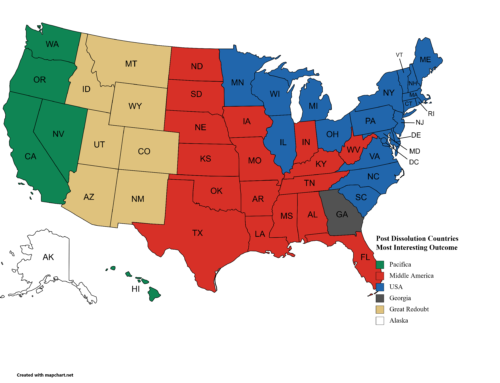If the Coronavirus pandemic has taught us anything, it is the importance of evidence in decision-making. Facts abound in the world. Most are irrelevant to any particular issue. But being unaware of the facts relevant to your organizational situation blinds you as a leader. I encourage all senior leaders, especially CEOs and Board members to strongly consider establishing a Chief Analyst in your organization.
A month ago I wrote about what was happening with Coronavirus and how the pandemic was not like the flu, traffic accidents or other seemingly similar causes of death, such as child drownings in backyard pools. In that piece, I tried to explain how this pandemic is not about politics, but about the math of infectious spread.
I cautioned then, as I do now, that whenever someone presents some fact to you, there is always a “so therefore…” attached to it. In the case of Coronavirus, those who wanted to show it wasn’t a big deal said 30,000 people die every year of the flu in the US. Others said we more people die in car accidents with the “so therefore…” being that we can’t ban driving, so we shouldn’t lock down a population. As of this writing, more than 45,000 people in the US alone have died of Covid-19, more than doubling in a week, with more to come, and all within a short time frame. How do those facts completely change the argument of those that say it isn’t a big deal.
I urge all senior leaders, be you business CEOs, governors, mayors, county executives, or military leaders, to consider how facts relate specifically to your situation and why it is in your best interest to actively seek out information daily. I’ll go a step farther and argue you ought to hire a senior executive to be responsible directly to the CEO and Board for researching and reporting on relevant data to the C-suite to inform decision-making. The larger the company, the larger the Chief Analyst’s team ought to be. The more complex your business, the more people with research and analytical skills specific to those issues ought to be on that team.
Evidence brings truth into decision-making and differentiates between the hopefully optimistic and those with a foundation for their decisions. Evidence and relevant truth engenders trust. Trust within the organization that what you are doing is correct and that the leadership is on the right track. Trust from the shareholders and investors that that the business is built on the foundation of truth and not hand-waving or magic pixie dust, and is thus worth investing in.
Hiring a Chief Analyst affords the company the freedom to envision the possible and plausible and what you would have to do to survive downturns that others in your competitive space don’t foresee. So many organizations are so caught up in day-to-day survival that they cannot see how a seemingly minor variable in their success equation.
Lets use a practical example. How can a virus in China affect agriculture sales in Europe? A chain of seemingly impossible events are actually quite plausible and, in fact, happened. The virus spread outside of China to Europe and the US. Countries within the EU shut their borders for the first time in modern history. Migrant farm workers from Central and Eastern Europe are unable to travel to Bavaria to work in the hops farms. Those farms will see a major reduction in production this year which affect how much beer is made. Furthermore, the closing of restaurants and hotels has led to a near total collapse of nearly half the food distribution system. So now you have farmers desperately seeking local people without experience to plant and pick vegetables that may have no buyer when ready for harvest.
A Chief Analyst would be tasked with seeking out these plausible scenarios to provide the C-suite and Board so that they can do their most important job behind maintaining corporate focus on objectives, namely, risk management. Having been given information on possible and plausible scenarios, senior leadership then makes informed decisions on which risks to accept and which risks to mitigate against that risk with some strategy developed specifically for that situation.
Evidence forces transparency, which is a good in and of itself. While some decisions need to be kept secret to maintain a competitive advantage, the process of making those decisions internally ought to be transparent and oversight of those decisions by boards or auditors ought to be simple if the process is transparent. That leaders are committed to transparency and regular auditing shows their people and investors they have nothing to hide, which engenders trust.
Building your organization on truth and evidence thus exposes those bad actors for whom truth is dangerous. Nobody should be afraid of truth in any organization. Bad news only gets worse with age. Difficult truth ought to be seen as a rationale for making necessary course corrections within a business rather than something to hide from shareholders and the rank and file of the company. Once you bring in a Chief Analyst, one of two things will happen with respect to bad actors. Either they will expose themselves as such, giving you the opportunity to offer them an exit, or they will be constrained to follow the norms of your honest and transparent company.
Dov Seidman, an ethicist and founder of the How Institute for Society says in an interview with Tom Friedman of the New York Times: “Great leaders trust people with the truth. And they make hard decisions guided by values and principles, not just politics, popularity or short-term profits. Great leaders understand that when so many vulnerable and scared people are so willing, so quickly, to put their livelihoods and even their lives in their leaders’ hands, and make sacrifices asked of them, they expect the truth and nothing but the truth in return. Leaders who trust people with the truth are trusted more in return. But you better not betray my trust — by not telling me the truth — when I have literally put my life in your hands.”
Hiring a Chief Analyst, whether a single person helping the CEO think about the possible, or an entire organization with analysts and even a lab to test possibilities, results in a stronger company or organization based on a foundation that people will want to work for and invest in.
Keep thinking…






Leave A Comment